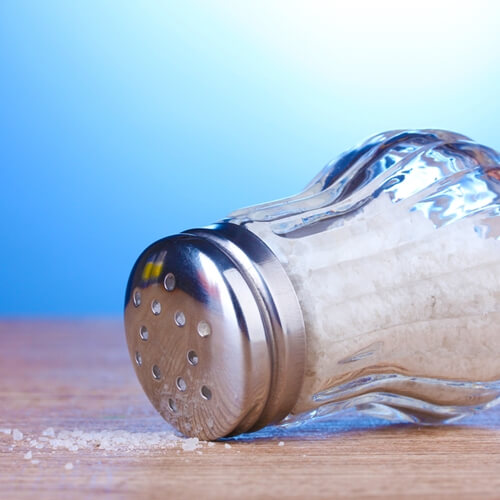So You Over-Salted Your Dish?
Salt can be both an ally and an enemy. While it adds flavor and zest to your dish, too much salt can seemingly ruin it, causing people eating it to constantly reach for their glass of water. Adding too much salt is a mistake that even culinary academy graduates make, because the line between not enough and too much is so fine. So what do you do when that smidgen turns into a dash?
First off
Know what ingredients are already salty. If you’re cooking with any of the following ingredients, you probably have to add very little salt to the dish:
- Cured meats like bacon, pepperoni or salami.
- Soy sauce.
- Olives.
- Pickles.
- Capers.
- Anchovies.
- Parmesan cheese.
- Gravy.
Too much salt in a soup
If you over-salt a soup or stew, add more of the solid main ingredients. Depending on the type of soup you’re making, you can also use some water, sour cream or brown sugar to offset the salty flavor. To ensure your soup doesn’t end up tasting bland, add some extra seasoning. If you don’t want to add anything to the soup, try peeling and cutting a potato into big chunks and sticking them in the soup for about 15 minutes before removing. The potato can soak up some of the salt without altering the flavor of the soup.
Too much salt on veggies
One of the best ways to offset the taste of salt is to serve it with something creamy. Veggies always taste better with some cheese, so serve them with a mild cheese, like mozzarella, or a cream sauce to mask the saltiness. If you don’t want to use cheese, you can also drizzle on something acidic, like lemon or lime juice or white wine vinegar. This masks the salt with a tart flavor. A little bit goes a long way, though, so don’t use too much.
Too much salt on your meat
If you’re seasoning a piece of meat and you put too much salt on it, you can usually brush the salt off prior to cooking. However, if you don’t realize that you used too big of a measurement of salt until after the meat begins cooking, serve it with potatoes, rice, or quinoa. When the meat is eaten with an unsalted starch or grain, the taste of the salt will be minimized. If you’ve purchased store-bought meat, like ham or bacon, soak it in water for a couple of hours so some of the salt comes out in the water.
Still too salty!
Let’s say you were sprinkling salt on your dish and the lid of the salt shaker came off and all of these remedies were just not enough to save your dish. If you’re still set on eating it, drink a sweet wine, or sparkling soda or water with it. The carbonation will cleanse your palate with every sip, minimizing the taste of salt.


